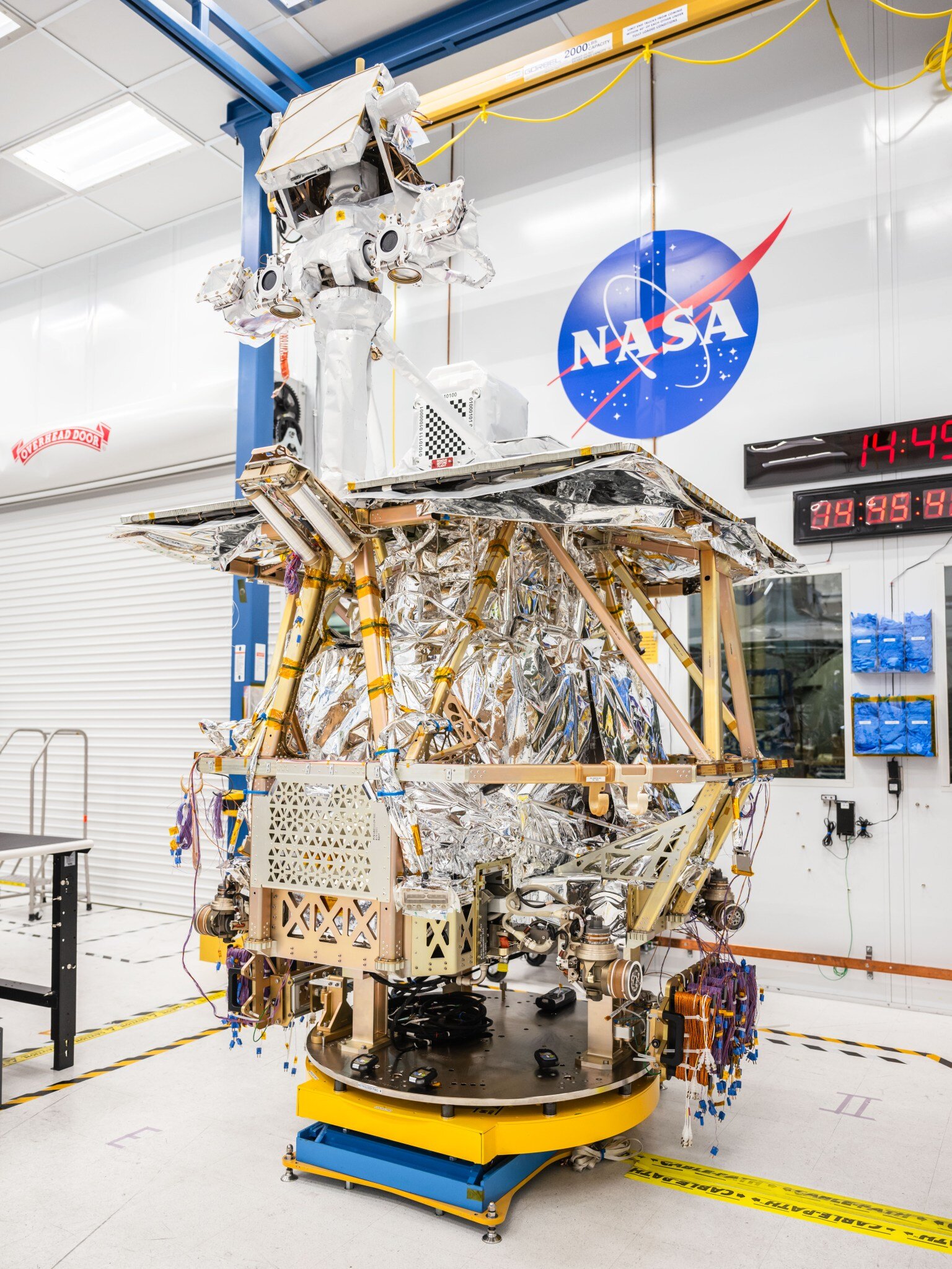NASA’s Volatiles Investigating Polar Exploration Rover (VIPER) has recently undergone a significant upgrade, raising its mast and, with it, its capabilities. The mast, which resembles the rover’s “neck” and “head,” is equipped with a suite of instruments. These tools are designed to assist the team of rover drivers and real-time scientists in sending commands and receiving data as VIPER navigates the hazardous terrain of the lunar South Pole.
During its approximately 100-day mission, VIPER aims to enhance our understanding of the origin of water and other resources on the moon. This mission is crucial as NASA plans to send astronauts to this extreme environment as part of the Artemis campaign.
The tip of VIPER’s mast, standing approximately eight feet (2.5 meters) above its wheel rims, is equipped with a pair of stereo navigation cameras, a pair of powerful LED headlights, and both low- and high-gain antennas. These antennas will transmit data to and receive data from the Deep Space Network (DSN) antennas on Earth.
The stereo navigation cameras, the “eyes” of the rover, are mounted on a part of the mast that gimbals. This allows the team to pan them as much as 400 degrees around and tilt them up and down as much as 75 degrees. The VIPER team will use these navigation cameras to take sweeping panoramas of the rover’s surroundings and images to detect and further study surface features such as rocks and craters.
VIPER will be the first planetary rover to have headlights due to the extremes of light and darkness found on the moon. The headlights will cast a narrow, long-distance beam—much like a car’s high beams—to help the team reveal obstacles or interesting terrain features that would otherwise stay hidden in the shadows.
To transmit large amounts of data across the 240,000 miles (384,000 km) that separate Earth and the moon, VIPER has a gimballing precision-pointed, high-gain antenna. Its low-gain antenna will also send data, but using radio waves at a much lower data rate.
The ability for the antennas to maintain the correct orientation, even while driving, is critical. Without it, the rover cannot receive commands while in motion on the moon and cannot transmit any of its data back to Earth. All that data is then transferred from the DSN to the Multi-Mission Operations and Control Center at NASA’s Ames Research Center in California’s Silicon Valley, where rover operations are based.
Before the mast’s installation on the rover, engineers put it through a variety of tests. This included time in a thermal vacuum chamber to verify that the white coating surrounding the mast insulates as intended. After the mast’s integration in the clean room at NASA’s Johnson Space Center in Houston, the team also successfully performed checkouts of its components, and for the first time sent data through the rover using its antennas.
VIPER is part of the Lunar Discovery and Exploration Program and is managed by the Planetary Science Division of NASA’s Science Mission Directorate at NASA Headquarters in Washington. VIPER will launch to the moon aboard Astrobotic’s Griffin lunar lander on a SpaceX Falcon Heavy rocket as part of NASA’s Commercial Lunar Payload Services initiative. It will reach its destination at Mons Mouton near the moon’s south pole. This mission marks a new horizon in lunar exploration, bringing us one step closer to understanding our celestial neighbor.




0 Comments